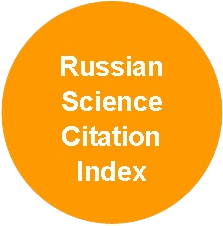Natural Reforestation in the Felling Sites in the North Taiga Lowland Area of Western Siberia
DOI:
https://doi.org/10.37482/0536-1036-2025-1-58-70Keywords:
regeneration, felling sites, undergrowth, undergrowth composition, Scots pine, silver birch, downy birch, undergrowth density, tree species occurrence, soil mineralization, West Siberian north taiga lowland forest areaAbstract
The indicators of undergrowth accumulation in the felling sites of the West Siberian north taiga lowland forest area have been analyzed. The undergrowth has been recorded on the plots measuring 2×2 m in the amount of 30 plots on each studied felling site. It is noted that reforestation in the study area is proceeding quite successfully. In the conditions of green moss-berry and wild rosemary-lingonberry forest types, the undergrowth includes Scots pine (Pinus sylvestris L.), silver (Betula pendula Roth.) and downy (B. рubescens Ehrh.) birch, Siberian stone pine (Pinus sibirica Rupr.), aspen (Populus tremula L.), Siberian spruce (Picea obovata Ledeb.) and Siberian larch (Larix sibirica Ledeb.) with the dominance of Scots pine and silver birch. The high proportion of birch is explained by the annual seed production of the species and the transfer of seeds by wind over long distances, as well as its ability to vegetatively renew. The regeneration of coniferous species is inhibited by the periodicity of seed years, the suspension of seeds in the forest litter and moss thalli. These problems can be solved by soil mineralization. It is better to combine mineralization with the clearing of felling sites from felling residues. The latter are bulldozed onto a skidding trail from 2 sides. As a result of mixing the felling residues with the forest litter and soil, wood destruction processes are activated and the fire hazard at the felling site is minimized, and ideal conditions for the accumulation of undergrowth are created. The main area between the skidding trails (65–70 %) remains without mineralization, since in this part of the felling site, the maximum amount of pre-generation undergrowth is preserved during logging operations. In the conditions of the northern taiga subzone of the Khanty-Mansy Autonomous Okrug – Yugra, where the average wood increment is 0.6 m3/ha, the raw material value of the stands gives way to the ecological value. Considering the important ecological role of silver and downy birch, it is advisable to establish them as the main tree species. This will speed up the transfer of felling sites to forested lands and reduce an unreasonably high proportion of the forest culture fund area.
Downloads
References
Бунькова Н.П., Залесов С.В., Залесова Е.С., Магасумова А.Г., Осипенко Р.А. Основы фитомониторинга. Екатеринбург: Урал. гос. лесотехн. ун-т, 2020. 90 с. Bun’kova N.P., Zalesov S.V., Zalesova E.S., Magasumova A.G., Osipenko R.A. Fundamentals of Phytomonitoring. Yekaterinburg, Ural State Forestry Engineering University Publ., 2020. 90 p. (In Russ.).
Ведерников Е.А., Залесов С.В., Залесова Е.С., Магасумова А.Г., Толкач О.В. Обеспеченность подростом спелых и перестойных темнохвойных насаждений Пермского края // Изв. вузов. Лесн. журн. 2019. № 3. С. 32–42. Vedernikov E.A., Zalesov S.V., Zalesova E.S., Magasumova A.G., Tolkach O.V. Provision with Undergrowth of Mature and Overripe Dark Coniferous Stands in Perm Krai. Lesnoy Zhurnal = Russian Forestry Journal, 2019, no. 3, pp. 32–42. (In Russ.). http://doi.org/10.17238/issn0536-1036.2019.3.32
Данчева А.В., Залесов С.В. Экологический мониторинг лесных насаждений рекреационного назначения. Екатеринбург: Урал. гос. лесотехн. ун-т, 2015. 152 с. Dancheva A.V., Zalesov S.V. Environmental Monitoring of Forest Plantations for Recreational Purposes. Yekaterinburg, Ural State Forestry Engineering University Publ., 2015. 152 p. (In Russ.).
Залесов С.В. Лесоводство. Екатеринбург: Урал. гос. лесотехн. ун-т, 2020. 295 с. Zalesov S.V. Forestry. Yekaterinburg, Ural State Forestry Engineering University Publ., 2020. 295 p. (In Russ.).
Залесова Е.С., Белов Л.А., Залесов С.В., Тимербулатов Ф.Т., Чермных А.И. Влияние типа леса и полноты древостоев на обеспеченность подростом спелых и перестойных сосняков подзоны северной тайги // Междунар. науч.-исследоват. журн. 2019. № 11(89). Ч. 2. С. 37–41. Zalesova E.S., Belov L.A., Zalesov S.V., Timerbulatov F.T., Chermnykh A.I. Influence of Forest Type and Normality on Security of Matter of Ripe and Perennial Pine Woods of North Taiga Subzone. Mezhdunarodnyj nauchno-issledovatel’skij zhurnal = International Research Journal, 2019, no. 11(89), part 2, pp. 37–41. (In Russ.). https://doi.org/10.23670/IRJ.2019.89.11.040
Залесова Е.С., Залесов С.В., Терехов Г.Г., Толкач О.В., Луганский Н.А., Шубин Д.А. Обеспеченность спелых и перестойных светлохвойных насаждений ЗападноУральского таежного лесного района подростом предварительной генерации // Успехи соврем. естествознания. 2019. № 1. С. 39–44. Zalesova E.S., Zalesov S.V., Terekhov G.G., Tolkach O.V., Luganskiy N.A., Shubin D.A. Self-Sufficiency of Mature and Overmature Softwood Forests of West Ural Taiga Region in Undergrowth of Pre-Generation. Uspekhi sovremennogo estestvoznaniya = Advances in Current Natural Sciences, 2019, no. 1, pp. 39–44. (In Russ.).
Калачев А.А., Архангельская Т.А., Залесов С.В. Лесоводственная эффективность сплошнолесосечных рубок в пихтовых лесах Рудного Алтая // Аграрн. вестн. Урала. 2014. № 4(122). С. 60–63. Kalachev A.A., Arkhangelskaya T.A., Zalesov S.V. Silvicultural Efficiency of ClearCutting in Fir Forests of Rudny Altai. Agrarnyj vestnik Urala = Agrarian Bulletin of the Urals, 2014, no. 4(122), pp. 60–63. (In Russ.).
Мелехов И.С. Лесоводство. М.: ГОУ ВПО МГУЛ, 2005. 324 с. Melekhov I.S. Forestry. Moscow, Moscow State Forest University Publ., 2005. 324 p. (In Russ.).
Санников С.Н. Экология и география естественного возобновления сосны обыкновенной. М.: Наука, 1992. 264 с. Sannikov S.N. Ecology and Geography of Natural Regeneration of Scots Pine. Moscow, Nauka Publ., 1992. 264 p. (In Russ.).
Цветков В.Ф. Вопросы лесовозобновления в связи с рубками на Европейской севере России // Некоторые вопросы лесоведения и лесоводства на Европейском севере России. Архангельск: Арханг. гос. техн. ун-т, 2005. С. 29–76. Tsvetkov V.F. Reforestation Issues in Connection with Logging in the European North of Russia. Some Issues of Forestry and Silviculture in the European North of Russia. Arkhangelsk, Arkhangelsk State Technical University Publ., 2005, pp. 29–76. (In Russ.).
Akay A.E., Yuksel A., Reis M., Tutus A. The Impacts of Ground-Based Logging Equipment on Forest Soil. Polish Journal of Environmental Studies, 2007, vol. 16, no. 3, pp. 371–376.
Bartalev S.A., Ershov D.V., Isaev A.S., Potapov P.V., Turubanova S.A., Yaroshenko A.Yu. Russia’s Forests. Dominating Forest Types and Their Canopy Density. Scale 1: 14,000,000. Moscow, 2004.
Cambi M., Certini G., Neri F., Marchi E. The Impact of Heavy Traffic on Forest Soils: A. Review. Forest Ecology and Management, 2015, vol. 338, pp. 124–138. https://doi.org/10.1016/j.foreco.2014.11.022
Marchi E., Picchio R., Mederski P.S., Vusić D., Perugini M., Venanzi R. Impact of Silvicultural Treatment and Forest Operation on Soil and Regeneration in Mediterranean Turkey Oak (Quercus cerris L.) Coppice with Standards. Ecological Engineering, 2016, vol. 95, pp. 475–484. https://doi.org/10.1016/j.ecoleng.2016.06.084
Osman K.T. Forest Soils: Properties and Management. Switzerland, Springer International Publishing, 2013. 217 p. https://doi.org/10.1007/978-3-319-02541-4
Šušnjar M., Horvat D., Šešelj L. Soil Compaction in Timber Skidding in Winter Conditions. Croatian Journal of Forest Engineering, 2006, vol. 27, no. 1, pp. 3–15.
Zenner E.K., Fauskee J.T., Berger A.L., Puettmann K.J. Impacts of Skidding Traffic Intensity on Soil Disturbance, Soil Recovery, and Aspen Regeneration in North Central Minnesota. Northern Journal of Applied Forestry, 2007, vol. 24, iss. 3, pp. 177–183. https://doi.org/10.1093/njaf/24.3.177
Zetterberg T., Olsson B.A., Löfgren S., Brömssen von C., Brandtberg P.-O. The Effect of Harvest Intensity on Long-Term Calcium Dynamics in Soil and Soil Solution at Three Coniferous Sites in Sweden. Forest Ecology and Management, 2013, vol. 302, pp. 280–294. https://doi.org/10.1016/j.foreco.2013.03.030













